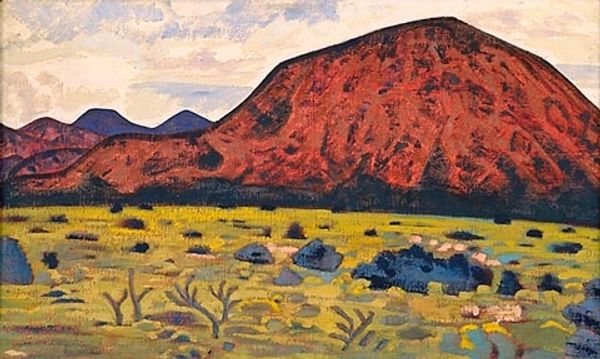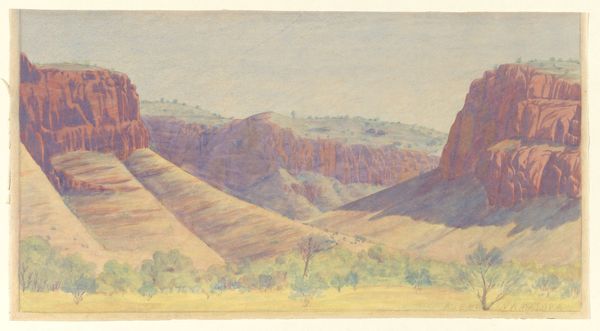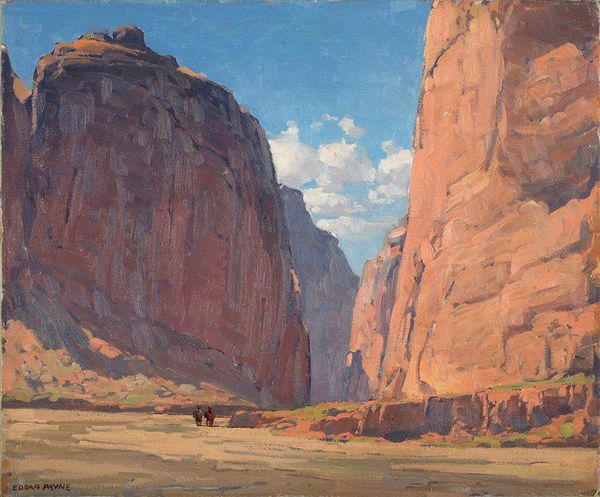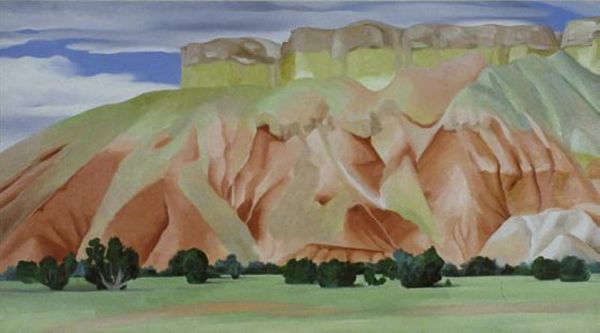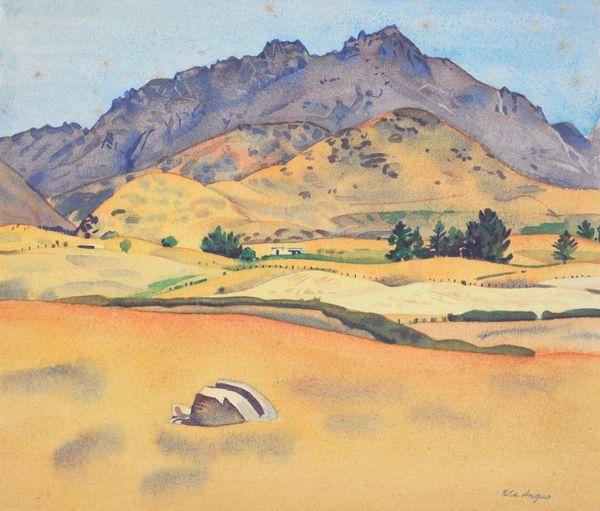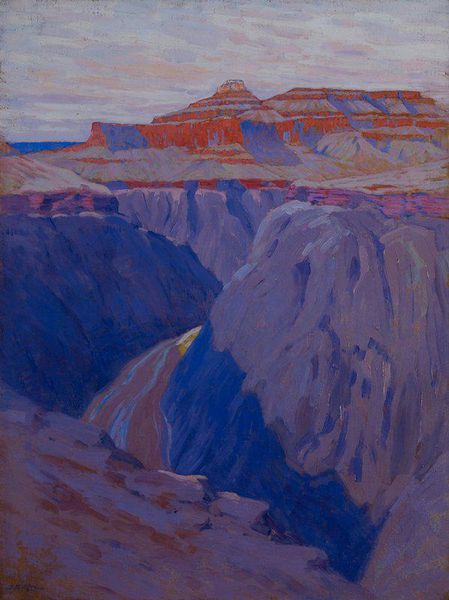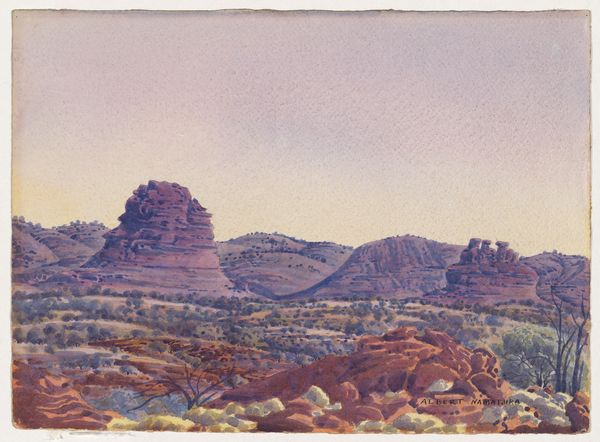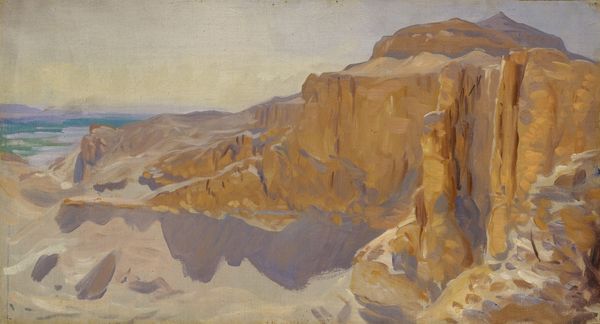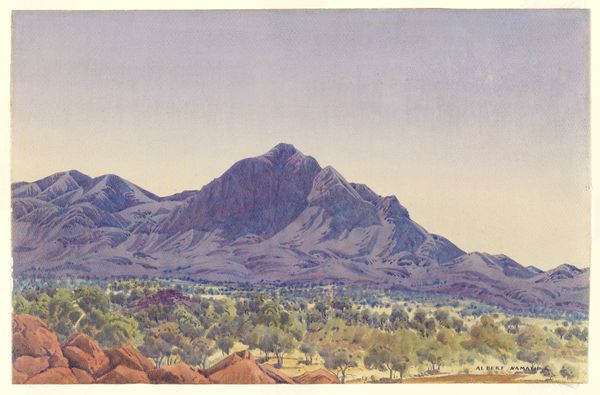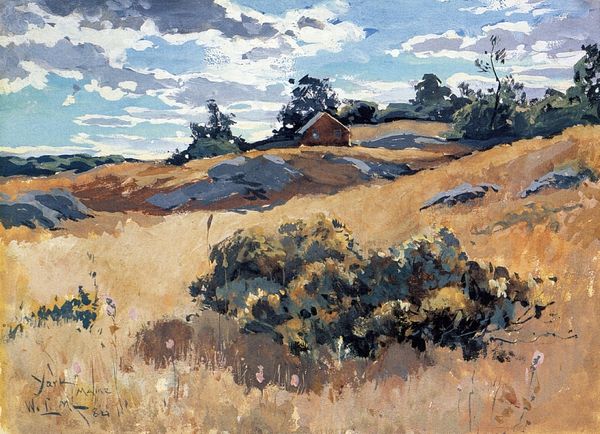
painting, oil-paint
#
sky
#
painting
#
oil-paint
#
landscape
#
oil painting
#
rock
#
mountain
#
natural-landscape
#
cityscape
#
realism
Copyright: Public domain
Curator: Welcome. Today we’re observing Maynard Dixon’s “White Butte, Utah,” an oil painting that, while undated, clearly reflects the artist’s deep engagement with the American West. Editor: It strikes me as almost minimalist in its depiction. Such simplified forms, large planes of colour. There’s a sense of serenity…a kind of monumental calm. Curator: Absolutely. And I think the title is so key: “White Butte.” The butte becomes almost a character, a protagonist. Consider how that geological form is a recurring symbol across different cultures. A marker, a monument, a testament to endurance and time itself. Editor: Yes, and observe how Dixon renders the form. He builds up the layers of paint to reflect the physical layers of sedimentation of the rock. Notice the contrast between the smoothness of the butte's sides and the rough texture of the scrubby vegetation on its top and around the base. I find that articulation fascinating; it reminds us of erosion processes acting upon this geologic form. Curator: You're spot on. The colours also support your view; that range of whites, creams, and browns, juxtaposed against the intense blue sky and the more subtle greens and yellows of the landscape in the foreground. The shadow side of the butte seems to represent the unknown side of that place. Editor: The clear distinctions between the colors indicate the material components in their direct appearance. I want to get closer to feel the texture and quality of the brushwork to understand Dixon’s method and hand as he built up the colors in paint. Curator: These artistic decisions can resonate deeply. These rock formations aren’t just physical structures but evoke concepts of the eternal, the ancient, even a spiritual anchoring point in the immensity of the Western landscape. The cultural understanding is layered throughout time, even the colours he used were available when he created the work. Editor: Thinking about the process really brings forth questions regarding resource management of material extraction during that time as well as now. It connects this single place and instance with all matter surrounding us. I have to wonder what resources, labour, or industry played a part. Curator: It's remarkable how Dixon captures a sense of timelessness. Editor: Agreed. Considering the labor and materials really opens it to different interpretations that reveal our collective history.
Comments
No comments
Be the first to comment and join the conversation on the ultimate creative platform.

